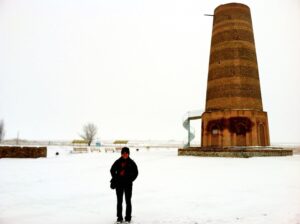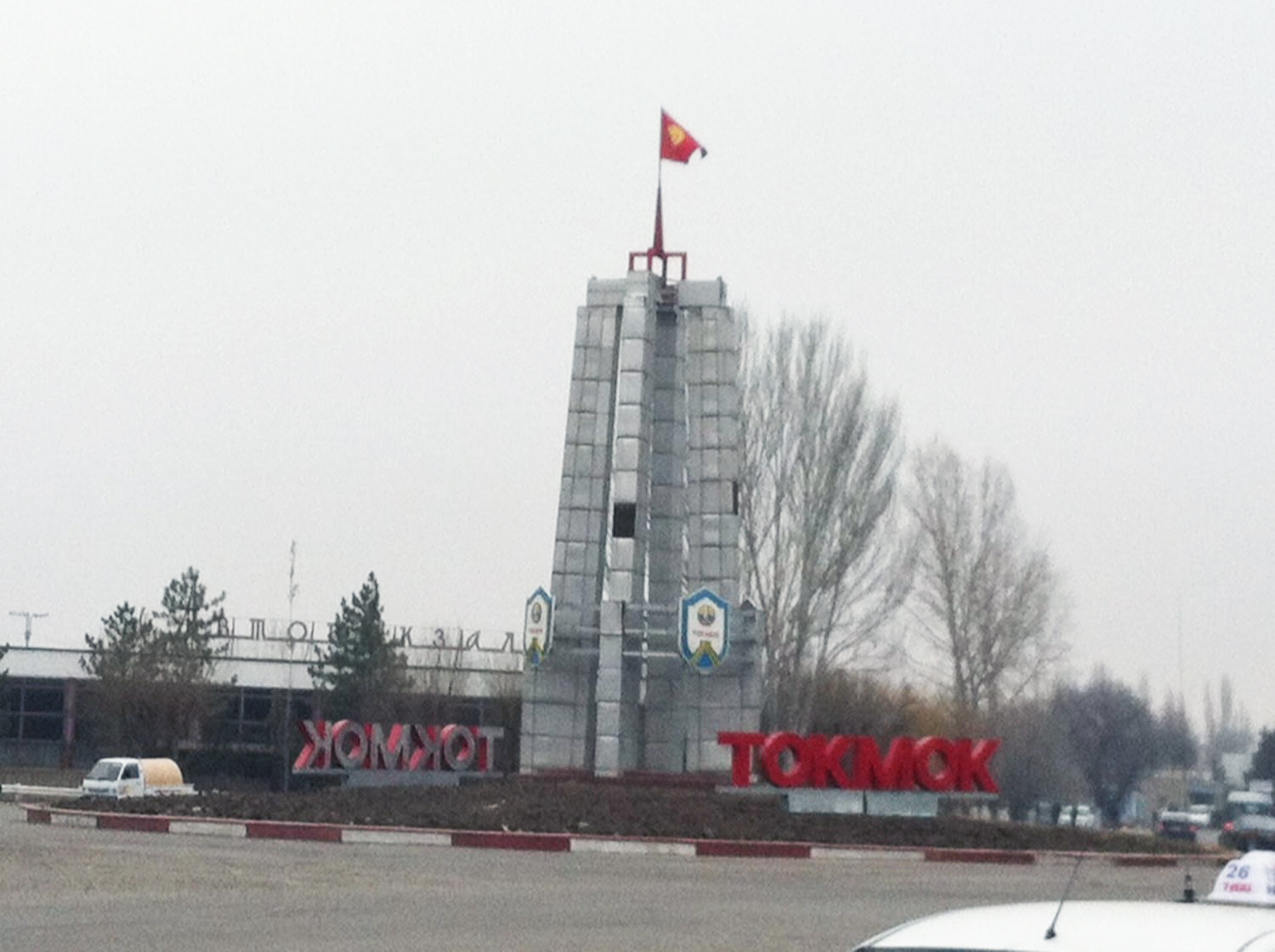In Bishkek this past week, Chechen journalist Kamila Zhabrailova talked to SRAS students about the history and culture of Chechnya, the Chechen diaspora in Kyrgyzstan, and her attitude towards the Boston marathon bombings. The Tsarnaev brothers are of Chechen descent and had spent some of their childhood in Kyrgyzstan, meaning that this was an especially informative and relevant lecture. The younger brother was born in Tokmok, a small town about an hour’s drive from Bishkek.
Before the bombings, Tokmok was most known for its 10th century Burana Tower from the Karakhanid Khanate. It was also known regionally for Restaurant Hawaii, a popular dining and wedding photo destination that has boats and a petting zoo. In fact, Tokmok was the first SRAS-organized excursion of the year. But now Tokmok is flooded with journalists trying to dig into the Tsarnaev brothers’ past, interviewing the brothers’ neighbors, acquaintances, and classmates. Meanwhile, the local community’s response ranges from amusement to resentment. Uzbek Aliev, the deputy head of a Chechen Diaspora group in Kyrgyzstan, pointed out that the Tsarnaev brothers spent little time in Kyrgyzstan. “They were brought up in American society, so there’s nothing to look for here.”

Still, the historical link between Kyrgyzstan and Chechnya is important, irrespective of the Tsarnaev brothers. In February 1944, Stalin deported about 85,000 Chechens (or 20,000 families) from Chechnya to the Kyrgyz SSR on suspicions that they would cohort with the Nazis. Many died on the train ride over, including our speaker’s great-grandmother. Today there are about 2,000 Chechens living in Kyrgyzstan, most in the northern Chui Valley (and specifically in Lebidinovka, Tokmok, Aleksandrokva, and Kant), and some in southern Kyrgyzstan in Osh.
Zhabrailova began the lecture talking about her background. As is typical of Chechens, it is a story of migration. She was born in 1987 in Bishkek to a Kazakh father and a Chechen mother. Her father had migrated to the Kyrgyz Republic to pursue a career in wrestling. Her mother, whose grandparents were deported by Stalin in 1944, was born in the Kyrgyz Republic. When Zhabrailova was four years old, she moved to Chechnya, where she witnessed the First Chechen War (1994-1997). Then when she was 11 years old, she moved back to Bishkek. There, she finished school, graduated from university with a degree in international relations, and became a journalist. And she intends on staying in Kyrgyzstan. She says every year Chechens may be leaving Kyrgyzstan to go back to Chechnya or to go to Kazakhstan, which has better economic conditions, but now she and her family consider Kyrgyzstan their rodina, or “homeland.”
Zhabrailova shared with SRAS what it was like to go through the First Chechen War. “I remember it like it was yesterday,” she said, putting up on her slideshow a photograph of the bombed Presidential Palace. She and her playmates would climb on top of deserted Russian tanks, despite being told not to by her parents, and play with stray bullets they found on the street. She also said she did not realize how strange her childhood in Chechnya was until she moved back to Bishkek in 1998.
Zhabrailova also talked about the Chechen national character. It was not an explicit theme, but she did make clear her view that Chechens are a fiercely independent people with a culture of machisimo. Men dance like “eagles” during the lezginka, the traditional Caucasian dance. Boys as little as two years old train in borba, or Chechen wrestling. It would be “shameful not to be able to defend oneself, one’s girlfriend, one’s family,” she explained and pointed to Chechen President Ramzan Kadyrov, an avid sportsman, a typical Chechen male. Zhabrailova showed photographs of him playing soccer with famous teams, or getting his ear playfully eaten by Mike Tyson.
Most of the presentation, however, was a historical and cultural overview of Chechnya — from its national cuisine, dress, language, music, dance, and sport, to its wedding traditions and landscapes. Zhabrailova evidently wanted to focus on the beautiful, positive aspects of Chechnya that most newspapers today would not. She also discussed the current efforts to develop Chechnya for mountain tourism. One particular photo that garnered much interest was the famed Lake Kazenoi-am that, according to ancient legends, is bottomless. Zhabrailova laughed when she showed us a picture of its bright blue waters: “When I was a child, I was afraid to swim in it, because no one would find me!”
The most interesting part of the lecture was the Q&A session, when she answered the question, “What do you think about the situation in Boston?” Her long-winded answer reflected the many hats she wears as a journalist, Kyrgyz citizen, and Chechen. Here are some translated excerpts from her answer:
“So far I don’t believe that the pair are guilty, because as a journalist, if I were to write an article about it, I would have so many gaps that I don’t understand. So right now I am not able to understand the reasons why they did it. And I’m not saying this because I’m protecting them. I’m simply not talking about it because for me right now it’s not clear.”
“And if you consider the fact that next year Kyrgyzstan will break the contract for the American airbase (Manas), it is really unclear why exactly at this time this is happening.”
“The night my mother told me the bombers were from Chechnya, I was in shock. I was not able to believe that one of ours, someone from Chechnya, was able to show our nation as a nation of bombers — for they not only represented themselves, but their whole nation. We had lived in the time of war, and we forgot about it. As you see, we began to reconstruct our republic, and we started to live a normal, peaceful life. And now…the republic has to painfully accept what happened.”
“There is gossip that they were from Kyrgyzstan. The older brother was eight years old, and the younger one, I don’t know. They didn’t live here for a long time. They simply came, and left.”
Zhabrailova offered a fascinating glimpse into the life of a young, professional woman who is proud to be both Chechen and Kyrgyz. She personifies Chechnya’s legacy of migration during the Soviet Union, both forced and voluntary. More importantly, she shows that, like all individuals, all Chechens have a unique story to tell, and that story cannot be simply assumed based on place of birth or where one was raised.





